Weekly wild news from our reserves – 10 September 2021
Church Farm – Jamie Smith
Rowley Grove is a precious ancient woodland situated on the southern border of Arger Fen & Spouse's Vale nature reserve near the villages of Bures, Nayland and Leavenheath. The wood was in private ownership and was put up for sale on the open market, so we responded urgently to secure its future. On his visit to Rowley Grove this week, Warden Joe experienced the woodland’s unique flora including small-leafed lime, a tree species notoriously difficult to spread naturally from seed; although with the increasingly hot summers, this is becoming more likely. Rowley Grove covers an area of 5 hectares and is an important habitat for many species and wildflowers typical of ancient woodland such as yellow archangel, greater stitchwort, bluebells, campion and primrose. Small-leafed lime, hazel and wild cherry also feature – once common, this mix of tree species is now restricted to a handful of ancient woodlands and is now considered rare in Suffolk. If you'd like to help us protect this special area for wildlife – we'd love your support. Thank you.
Sights and sounds of autumn
Turn the volume up and enjoy the sounds of autumn at Hen Reedbeds, with greylag geese calling overhead and the occasional bubbling sound of curlews.
Cut and thrust of conservation
Cladium mariscus is a species of flowering plant in the sedge family known by the common names swamp sawgrass, great fen-sedge, saw-sedge or sawtooth sedge. In the past, it was an important material to build thatched roofs; harvesting it was an arduous task due to its sharp edges that can cause deep lacerations. Found at Redgrave & Lopham Fen and a reason for the nature reserve’s designation, our volunteer team cut and harvest the species on a rotational basis each year to increase the botanical value of the overall sward. What a stunning seed head it displays!
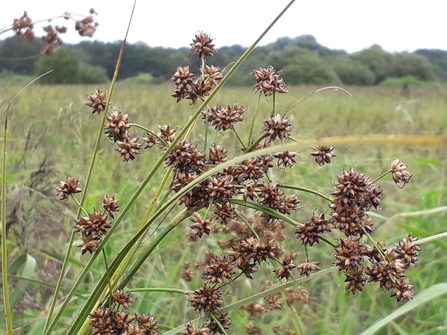
Saw sedge at Redgrave & Lopham Fen – Debs Crawford
Southern hawker
The southern hawker is a large hawker dragonfly that is on the wing from the end of June through to November. A common dragonfly of ponds, lakes and canals in the lowlands, particularly near to woodland, it can be seen patrolling a regular patch of water when hunting, or 'hawking' through woodland rides, like this one at Bradfield Woods. Hawkers are the largest and fastest flying dragonflies; they catch their insect-prey mid-air and can hover or fly backwards. The spectacular male southern hawker has vivid lime green spots all along the body, pale blue bands on the last three segments of the abdomen, blue-green eyes, and large green patches on the thorax. It is a very inquisitive dragonfly that will often come close to inspect you!
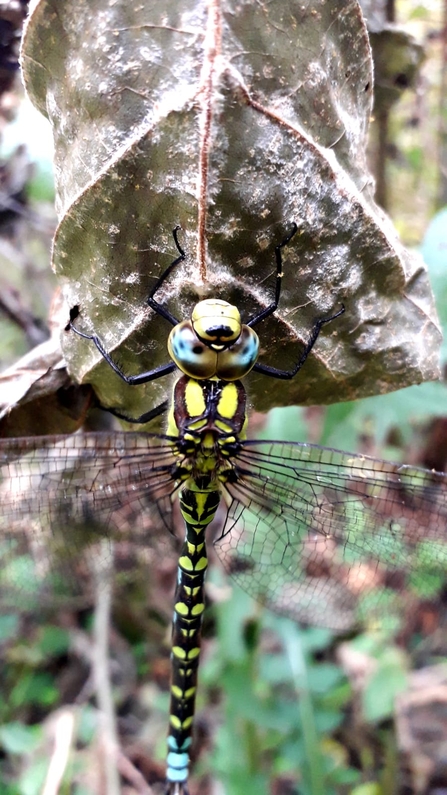
Southern hawker at Bradfield Woods - Alex Lack
Wasp nest dinner at Captain’s Wood
Captain’s Wood volunteer warden Andrew Bennett spotted this wasp nest which had been excavated by badgers so they could feast on the grubs inside.
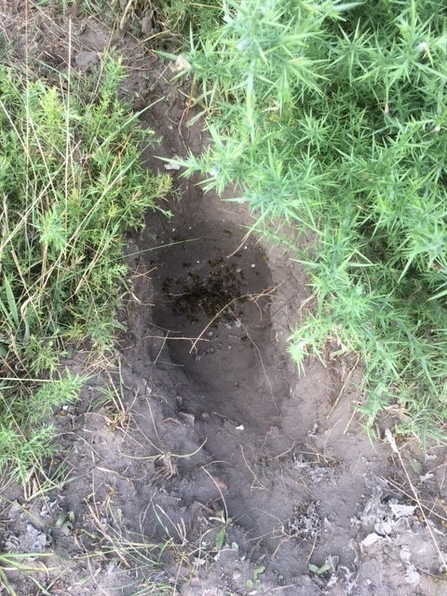
Wasp nest at Captain’s Wood – Andrew Bennett
Parasol casts a shadow
Lound Lakes Warden Andrew Hickinbotham spotted this epic parasol mushroom on the reserve this week. Parasol mushrooms can reach 25cm across and 30cm tall. This fungus is cream with brown velvety scales on the cap and a double ring on the stem.
Pincushion gall
This striking Bedeguar gall at Lound Lakes is also known as a robin’s pincushion. This gall is caused by the larvae of a tiny gall wasp, Dipoloepis rosae. The gall can be found developing on the stems of dog-roses during late summer; it acquires its reddish colour as it matures in autumn. Each gall holds many grubs, which feed on the gall tissues throughout the winter and emerge in spring as adults.
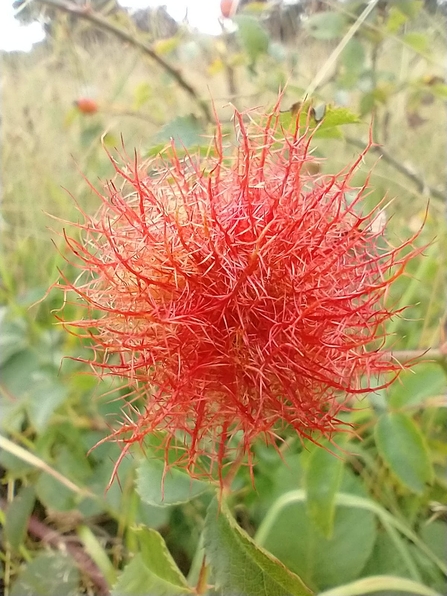
Robin’s pincushion gall at Lound Lakes – Andrew Hickinbotham
Grass of Parnassus
The image of this beautiful plant captured by Joe at Market Weston Fen, is a symbol of 'the wilderness and wet'. Also known as the 'bog star', it isn't actually a grass at all, belonging to an entirely different botanical class related to the saxifrages. It has ivory-white chalice-shaped flowers and heart-shaped leaves. The beautiful and delicate oval petals are veined with translucent green stripes and are cupped around a cluster of glistening yellow stamens. The name comes from ancient Greece where the cattle on Mount Parnassus developed a taste for the plant; hence it was an ‘honorary grass'. Grass of Parnassus is more or less confined to wet moors, damp pastures and marshes of northern Britain but it is still found at a few sites in the Suffolk and Cambridgeshire fens and the Broads.
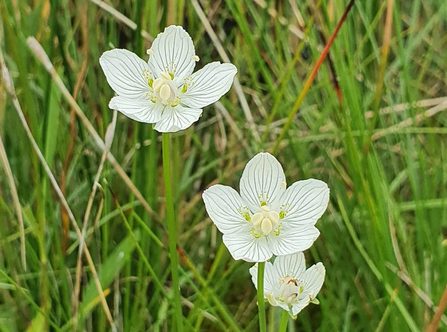
Grass of Parnassus at Market Weston Fen – Joe Bell-Tye
Topping birdsong
Warden Jamie Smith appreciated the calls of many birds whilst topping Hen Reedbeds recently. Species recorded included the bearded tits ‘pinging’, wheatear, black-tailed godwits, common and green sandpiper and whinchat.
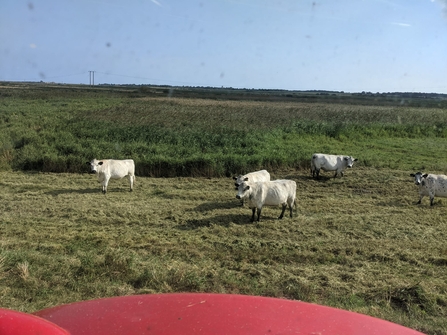
Topping Hen Reedbeds – Jamie Smith
Misty sunrise at Church Farm
Jamie also snapped this stunning sunrise at Church Farm this week.
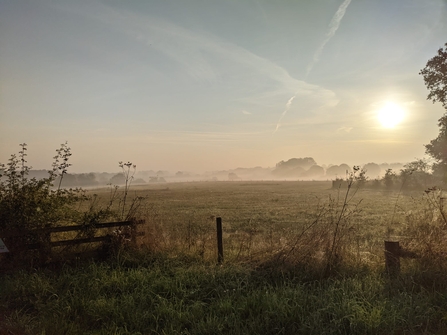
Church Farm – Jamie Smith







